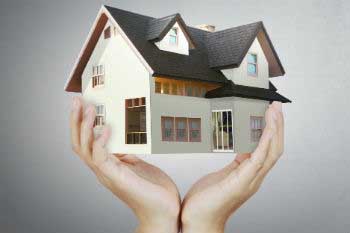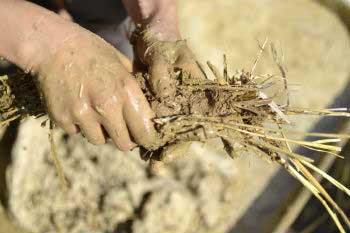Sustainable building materials
We have to put an end to those bad long-standing habits of squandering natural resources. Sustainable building materials or green building materials can be the solution.
At present the demand for a more sustainable way of building is no longer a matter of personal choice, and the sector has been now regulated for the purpose of implementing measures that improve the infrastructures´ and buildings´ environmental behaviour.

We are wrong to consider vehicles as the only polluting factors, as buildings consume 20 – 50% of the physical resources, according to their environment. The building trade is a great consumer of natural resources such as wood, minerals, water and energy. In addition, buildings, once built, continue to be a direct cause of pollution because of the emissions produced in them or their impact on the ground.
A sustainable architecture takes account of the use of resources (energy, natural resources), their environmental impact and the specific risks to people´s safety. For a responsible use of resources when building, what kind of products should be chosen?
Environmentally-friendly materials or green building materials
In building, environmentally-friendly materials (also known as green building materials) are those in which, for their production, placing and maintenance, actions of low environmental impact have been performed.
They have to be durable, reusable or recyclable, include recyclable materials in their composition and have to be from resources of the area where the building activity will take place –they have to be local materials.
These materials also have to be natural (soil, adobe, wood, cork, bamboo, straw, sawdust, etc.) and must not be spoilt by cold, heat or humidity.
Sustainable tech materials and products
They have to be highly durable and can incorporate different technologies, such as capturing energy, capturing C02 while removing pollution. They are used when, in the long term, they have a lower environmental cost than the natural materials.
Which are the sustainable materials most widely used for construction?

Sustainable building materials: Timber is the material with the lowest environmental impact on its production and life cycle, and has to be certified so that we can be sure about its sustainable production and origin.
Isolation renewable materials: These are completely recyclable and compostable, such as cellulose, which can be derived from newspapers or paper that are discarded. They cannot generate wastes and must attain the highest efficiency when regulating the temperature.
Paints and wood treatments: These have to be natural with no substances harming the ozone layer and without solvents or any other chemical products.
Which recycled materials can be found?

There is a reuse of wastes that are generated in other sectors for the production of building materials, such as quarry wastes (marble, slate, etc.). Also, we have wastes generated by industrial processes like ashes or mud that are used, or the urban solid ones.
There are other original techniques, such manufacturing concrete with recycled tyre rubber; using the mud from sewage plants for making bricks, or wood and cork remains (pruning, sawmills, sanding dust, etc.), and especially vegetal fibres (bamboo, coconut, etc.) that, once mixed with cement, also work as insulators.
In order to achieve a sustainable construction we have to put an end to those bad long-standing habits of squandering natural resources.
What do you make of all this? Do you think there should be greater investments in a more sustainable architecture?







